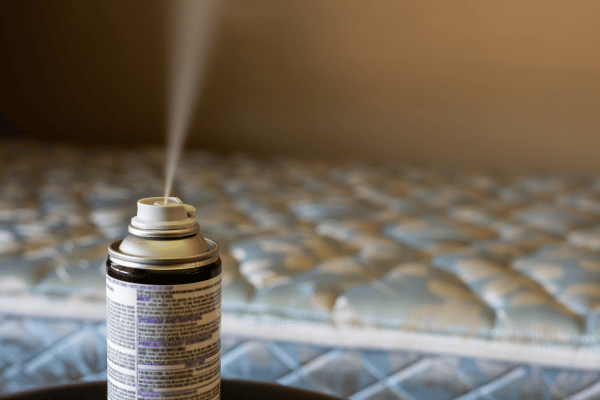- Home
- Trapping Mink
- Mink Trapping Tips
Mink Trapping Tips
This post may contain affiliate links so I earn a commission.
These simple yet effective mink trapping tips are sure to help you become a more successful trapper, allowing you to catch more mink than you ever thought possible.
In the beginning, most novice trappers are thrilled to find a random mink in one of their blind sets or muskrat sets.
However, that's the problem.
It's random and not consistent and before you know it, the trapping season is over and you've only caught one or two mink.
Here's the good news, consistently trapping mink is a lot easier than you think, and anyone can do it if you follow a few basic techniques.

Mink are very curious animals and love to explore small holes along a riverbank, brush piles, log jams, inlets or outlets along a stream, and anywhere else that could hold a potential meal.
Mink are always on the search for food which consists of mice, frogs, fish, muskrats or a variety of other things and they will typically travel long distances as they hunt, meaning you'll have to use a little bit of patience when it comes to trapping them.
Although you may see a mink track in the soft mud along a stream, it may be a few days before that same mink travels through that area again, but it will be back and hopefully you'll have a well placed trap waiting when it returns.
In fact, spotting mink tracks is one of the most effective ways to identify mink in the area.
Once you've located a few of their tracks or droppings, it's time to look for a good spot to make a set.
Below you'll find several sets that work great on mink as well as muskrats and the occasional raccoon.
Bottom Edge Set - Mink Trapping Tips
Perhaps one of the most overlooked mink trapping tips is utilizing the bottom edge set.
The bottom edge set works great for both mink and muskrat, and it's simple to make.
Plus, since the set is constructed underwater, it works great during those cold nights when you don't want a land set or pocket set freezing into the ice and becoming useless.

The bottom edge set is as simple as it sounds.
Find a vertical edge of a bank, place a 110 conibear at the base of the bank where it meets the riverbed and you're done.
Mink and muskrats love to swim along the bottom edge as they travel and search for food.
They love to have one side of their bodies touching the vertical bank and love to have their feet touch the bottom of the riverbed.
Since many rivers or streams are big, look for spots that will help naturally funnel the mink into your bottom edge set.
Small points or peninsulas that poke out into the river are perfect locations for a bottom edge set.
As the mink is swimming along the bank they'll reach the point and follow it around, leading them right into your trap.

One of the easiest ways to make a bottom edge set for mink is by using a conibear clip on a small brick as pictured above.
Simply attach the trap chain to the brick, set the trap in the conibear clip and place it on the bottom edge.
Another great location for a bottom edge set is under bridges.
Place the trap along the vertical bridge wall right where it meets the base.
This set is absolutely deadly on mink and muskrat and it only takes about a minute to make the set.
Pocket Sets - Mink Trapping Tips
Pocket sets are also very productive for trapping mink and they work great for raccoons and muskrats.
To make a pocket set, dig a small hole or "pocket" into the riverbank right at the waterline about 4"-6" wide and angle the hole slightly upward away from the water.
By angling it upwards, it keeps the bait out of the water and prevents it from being washed away.
Once the pocket is dug, create a flat spot in front of the pocket just under the water that will allow you to firmly bed a #1.5 coil spring trap.
The #1.5 coil spring works great for pocket sets because they're lightning quick and powerful enough to hold a raccoon if it stumbles into your mink set.

Secure the trap using a submersion setup and bait the pocket using fresh fish, or a portion of a muskrat carcass.
Muskrat meat works great for mink and it's one of my favorite baits to use.
Blind Set - Mink Trapping Tips
Although mink love the water, they spend most of their time on land.
As they move from the water to the land or travel through the grass, they leave behind small and distinct trails which are perfect for blind sets.
Look for these trails where they meet a natural pinch point that forces the mink into a smaller and more confined area.
This is the perfect spot for a blind set.
Blind sets do not use any bait, you simply set a #110 conibear in the spot where the mink will travel through it.

The picture above shows a blind set using a #110 conibear.
There was a distinct trail through the grass leading from a small marsh area making this a great spot for a blind set.
Mink Trapping Tips - Overall
If you're looking for the most important tip about trapping remember this.....making a set at a good location where you find sign is probably the most important rule when it comes to trapping mink.
You can make the best set in the world and it won't produce if there's no animals around to find it.
Once you locate a location that has good sign, try using one of the sets listed above.
They're easy to make, proven to work and they're sure to help you become a better mink trapper.



